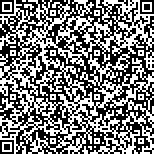| 本文已被:浏览 797次 下载 448次 |

码上扫一扫! |
|
|
| 慢性萎缩性胃炎证候要素分布规律的相关性分析 |
|
陈泽慧1, 邢恩龙2, 韩海啸3, 王瑞瑞4, 杨英姿5, 王菀6, 魏玥7, 杨晋翔7
|
|
1.中国中医科学院中医药信息研究所科教处, 北京 100700;2.首都医科大学附属北京康复医院中医康复中心推拿科, 北京 100144;3.北京中医药大学东方医院消化内科, 北京 100078;4.北京市丰台区中医医院(南苑医院)脑病科, 北京 100076;5.门头沟区中医医院脾胃病科, 北京 100000;6.联勤保障部队第九四〇医院全科医学科, 兰州 730050;7.北京中医药大学第三附属医院教育处, 北京 100029
|
|
| 摘要: |
| [目的] 探讨慢性萎缩性胃炎证候要素的分布规律。[方法] 临床采集慢性萎缩性胃炎患者中医四诊信息、胃镜及病理检查报告并建立慢性萎缩性胃炎病历数据库;采用因子分析、对应分析、类神经网络建模的多元统计方法分析慢性萎缩性胃炎证候要素分布情况、证候要素间关联性以及重要病理改变与证候要素间相关性。[结果] 慢性萎缩性胃炎证候要素包括气虚、湿、热、血瘀、气滞、阴虚、阳虚;两两证候要素中,气虚与气滞、气虚与阳虚、湿与热、血瘀与气滞、血瘀与阳虚、气滞与阳虚的关联性较高;湿、血瘀、气虚对重要病理改变异型增生的影响较大。[结论] 对慢性萎缩性胃炎证候要素分布规律的研究可为进一步加深对慢性萎缩性胃炎的中医病因病机阐释提供参考。 |
| 关键词: 慢性萎缩性胃炎 证候要素 因子分析 对应分析 类神经网络 |
| DOI:10.11656/j.issn.1673-9043.2022.06.05 |
| 分类号:R573.32 |
| 基金项目:北京中医药大学基本科研业务在读研究生项目(2019-JYB-XS-248)。 |
|
| Correlation analysis of syndrome elements distribution in chronic atrophic gastritis |
|
CHEN Zehui1, XING Enlong2, HAN Haixiao3, WANG Ruirui4, YANG Yingzi5, WANG Wan6, WEI Yue7, YANG JinXiang7
|
|
1.Scientific Research and Education Department, Institute of Information on Traditional Chinese Medicine, Beijing 100700, China;2.Massage Department, Beijing Rehabilitation Hospital of Capital Medical University, Beijing 100144, China;3.Gastroenterology Department, Dongfang Hospital Affiliated to Beijing University of Chinese Medicine, Beijing 100078, China;4.Department of Encephalopathy, Beijing Fengtai District Hospital of Traditional Chinese Medicine(Nanyuan Hospital), Beijing 100076, China;5.Department of Spleen and Gastric Diseases, Mentougou District Hospital of Traditional Chinese Medicine, Beijing 100000, China;6.General medicine Department, The 940th Hospital of Joint Logistics SupportForce of Chinese People's Liberation Army, Lanzhou 730050, China;7.Education Department, Beijing University of Chinese Medicine Third Affiliated Hospital, Beijing 100029, China
|
| Abstract: |
| [Objective] To discuss the distribution law of syndrome elements of chronic atrophic gastritis. [Methods] Clinical data of four traditional Chinese medicine(TCM) diagnosis,gastroscopy and pathological examination reports of patients with chronic atrophic gastritis were collected,and medical records database of chronic atrophic gastritis was established. Factor analysis,correspondence analysis and data mining methods like neural network modeling were used to analyze the distribution of syndromes of chronic atrophic gastritis,the correlation among syndromes and the correlation between important pathological changes and syndromes. [Result] The syndrome elements of chronic atrophic gastritis include qi deficiency, dampness, heat, blood stasis, qi stagnation, yin deficiency and yang deficiency. The correlation between qi deficiency and qi stagnation,qi deficiency and yang deficiency,dampness and heat,blood stasis and qi stagnation,blood stasis and yang deficiency,qi stagnation and yang deficiency was higher. [Conclusion] The study on the distribution law of chronic atrophic gastritis syndrome elements can provide reference for further deepening the explanation of etiology and pathogenesis of chronic atrophic gastritis in TCM. |
| Key words: chronic atrophic gastritis syndrome element factor analysis correspondence analysis neural network |
